
Women in Capital Markets Survey: signs of progress but more to be done at senior level
The KangaNews Women in Capital Markets Survey (WICM Survey) is a centrepiece of the WICM Yearbook. Conducted in August, more than 150 women from across the Australian capital-markets landscape shared their views in response to a range of questions that highlight workplace gender diversity and the steps the industry can take to improve further.
Laurence Davison Head of Content and Editor KANGANEWS
Survey responses came from women across the market community, though weighted towards more senior executives. This is perhaps unsurprising given the generally senior nature of the KangaNews readership, but the goal is to broaden the survey response in future years to build on the insights delivered in the first iteration.
Nearly three-quarters of survey respondents say they have worked in finance or capital markets for more than a decade, with nearly a third being industry veterans of more than 20 years’ standing (see chart 1). In the same vein, more than 80 per cent of survey respondents say they are in middle- or upper-management positions (see chart 2).
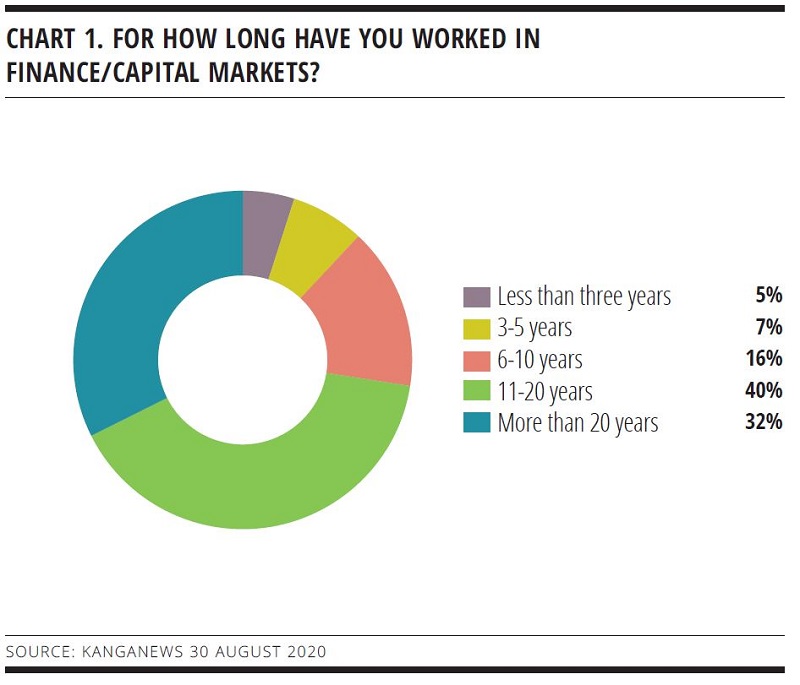
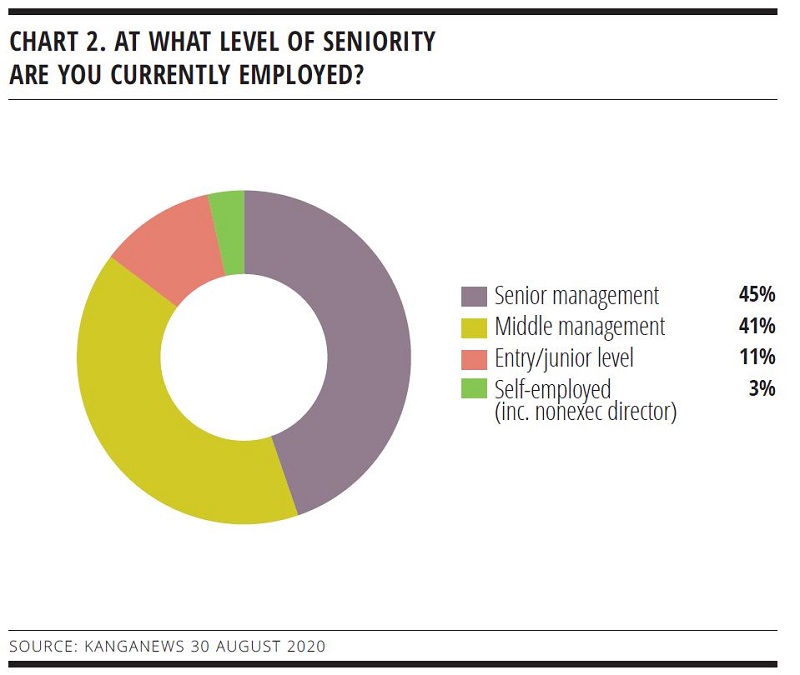
The spread of survey responses by sector of employment is wide and relatively even. Institutional and investment banks are the most represented sector, followed by investment firms. The survey also prompted a significant response from women working in service-provider firms, commercial banks, corporate treasury, nonbank financial institutions and the government, regulatory and development-bank space (see chart 3).
If there is a key message from the survey, it is that women working in Australian capital markets believe gender disparity in the industry is a real thing and, while it seems to have improved, there is still work to do. For instance, 60 per cent of survey respondents say their gender has disadvantaged them professionally in the past decade, while only 23 per cent say they have never experienced gender-based disadvantage (see chart 4).
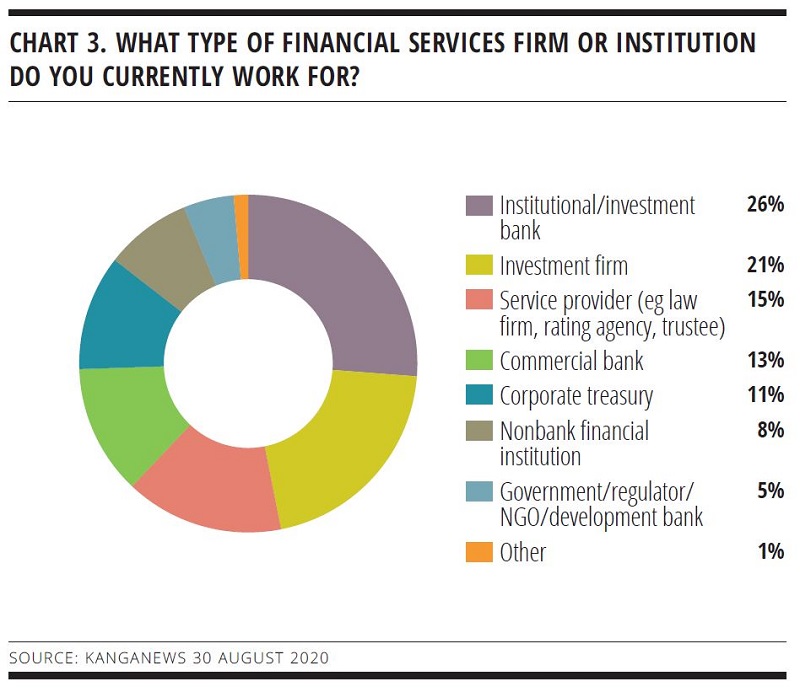
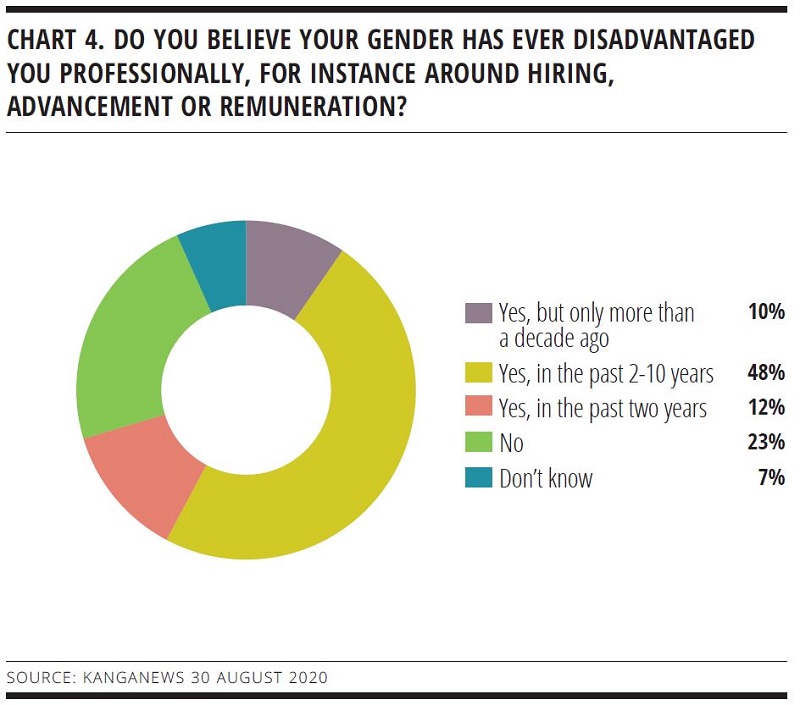
Nor do women in the Australian market find the industry’s performance on gender diversity particularly impressive. More than half say financial services is “less supportive of gender diversity” than comparable sectors – more than twice as many as believe the sector is an outperformer (see chart 5).
Gender disparity is reflected in a number of ways, of which the KangaNews WICM survey reflects several. In particular, women say the industry could do more to accommodate flexible working practices and believe there is still a disparity in hiring practices – especially at senior level.
Barely 10 per cent of survey respondents believe there is no room for improvement in capital markets when it comes to flexible working practices on a day-to-day, mid-term or longer-term basis (see chart 6).
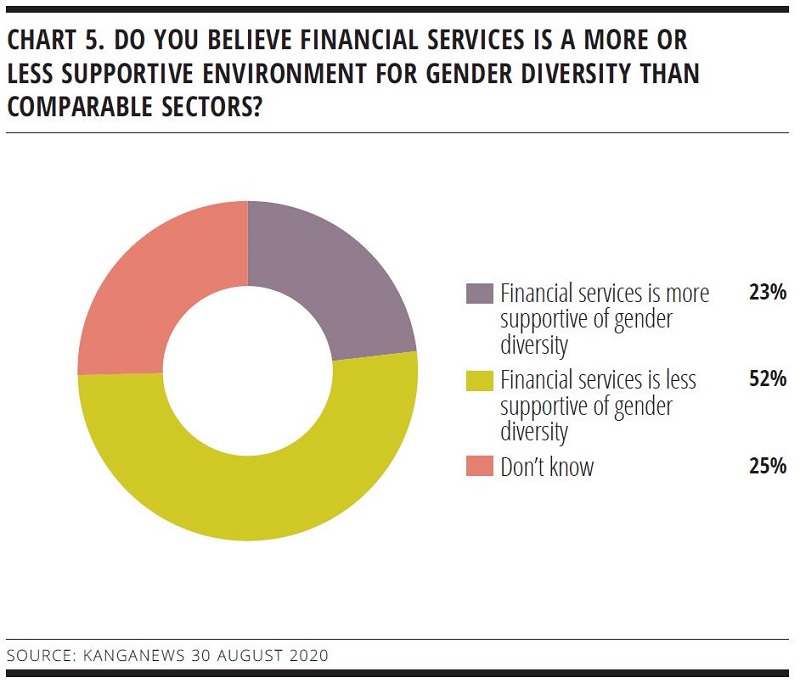
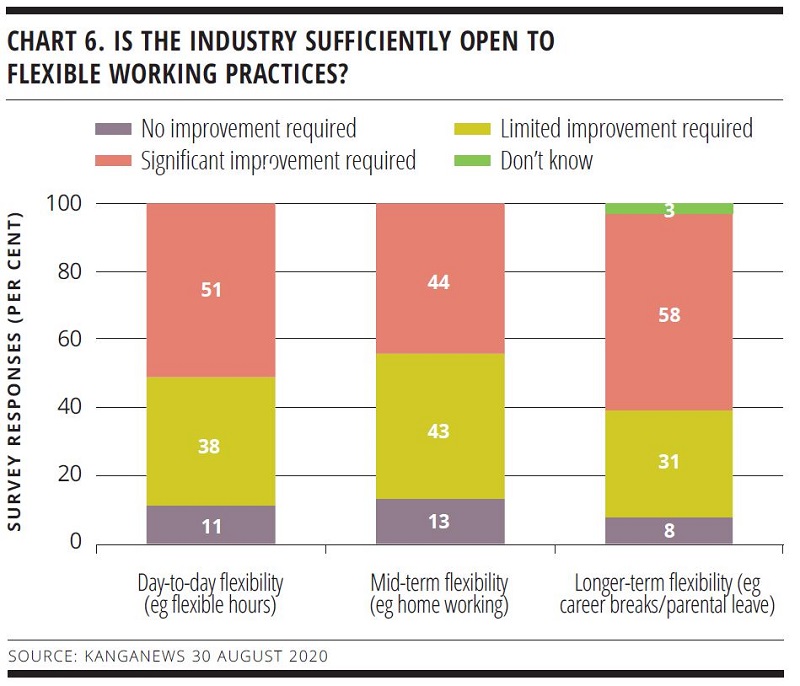
Meanwhile, more than 90 per cent of women filling in the survey believe taking a career break would be a disadvantage to career progression – 50 per cent saying it would be a significant disadvantage (see chart 7).
The COVID-19 crisis has been held up as a possible catalyst for change across global economies, especially in areas of social inclusion and with regard to flexible working. Women responding to the KangaNews WICM Survey are optimistic that the crisis will prompt more flexibility on mixed working arrangements, but there is also a noticeable expectation of mean reversion over time (see chart 8).
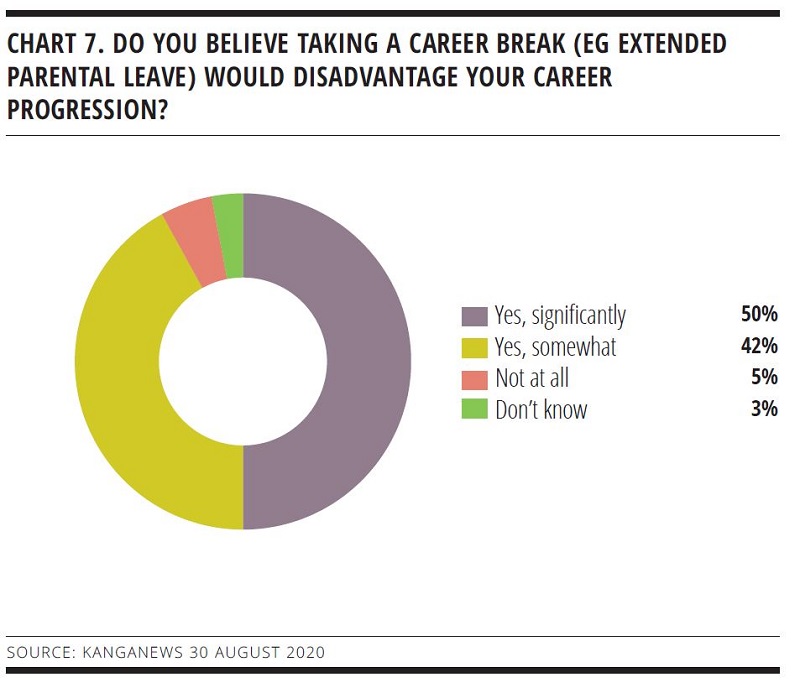
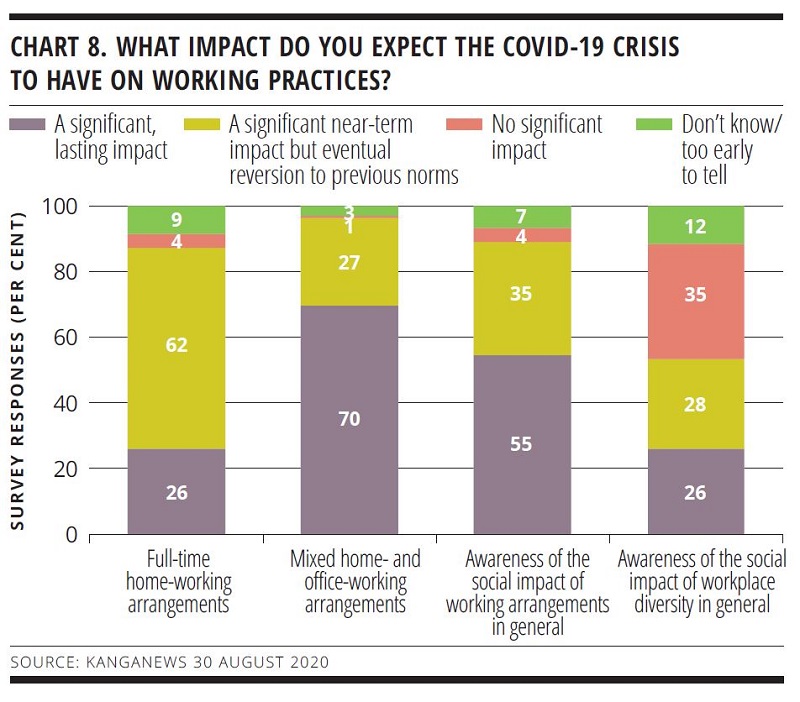
On a more positive note, the majority of women working in Australian capital markets believe gender diversity has improved over their careers. Around two-thirds report an improvement in both their own workplaces and the industry in general, though the majority of these say the improvement has only been marginal (see chart 9).
By a small margin, women responding to the KangaNews WICM Survey are inclined to think diversity in their own workplace has improved by more than the industry as a whole. This chimes with the fact that a majority of women say companies’ gender-equality policies and environments have influenced their decisions to leave or join an employer – 25 per cent as a “significant factor” (see chart 10).
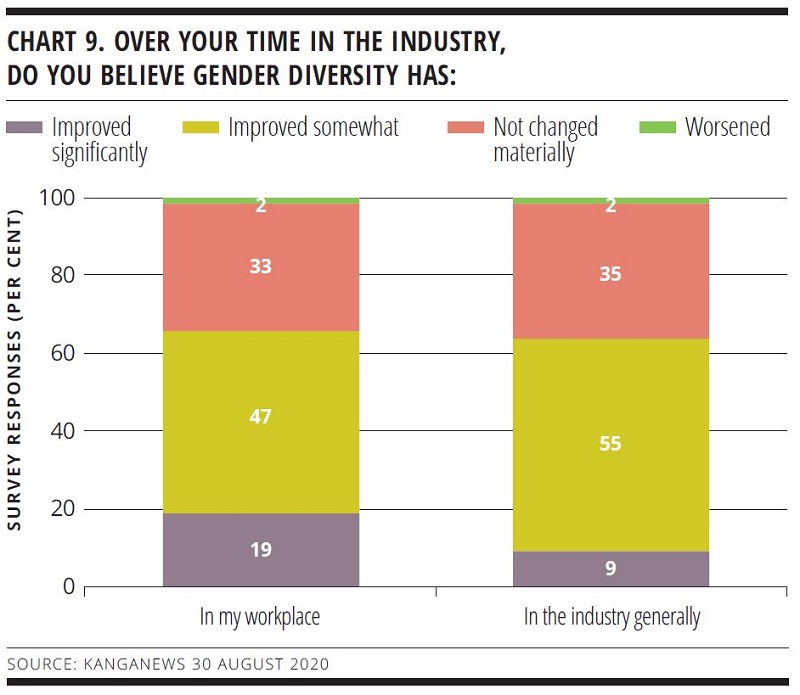
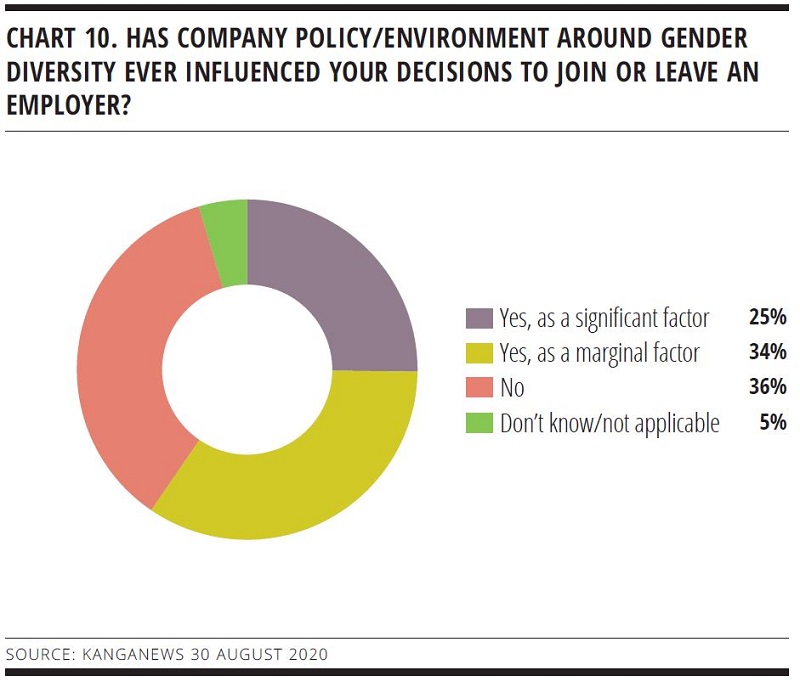
Another clear message from the KangaNews WICM Survey is that women working in Australian capital markets tend to feel gender-diversity issues are now more significant at senior level than junior.
For instance, while 42 per cent of survey respondents believe outright gender bias is a reason for gender disparity in the industry at entry level, that number leaps to 58 per cent when it comes to senior management (see charts 11 and 12). A small but significant proportion of survey respondents – 17 per cent – believe there are now no significant barriers to women entering the financial-markets sector while just 1 per cent say the same about progression to senior management.
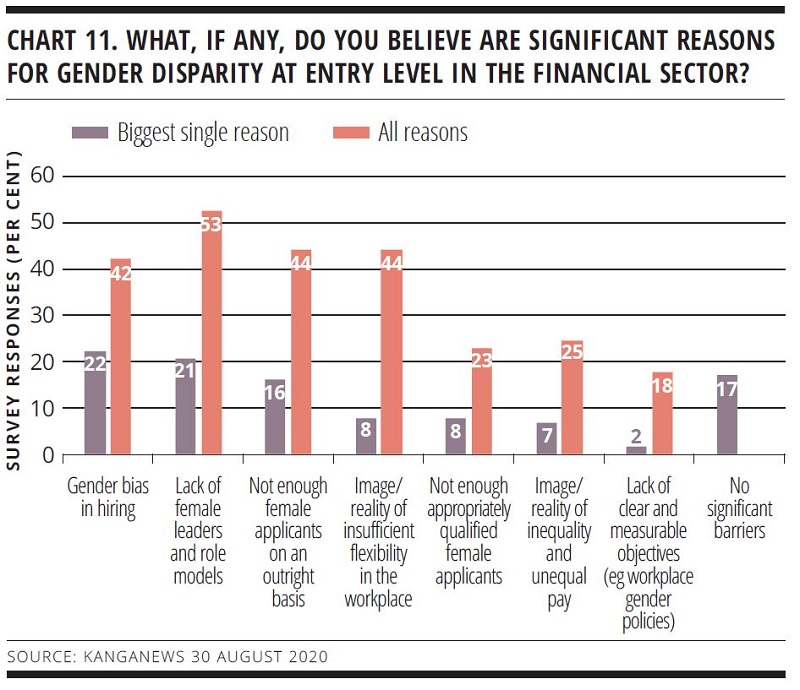
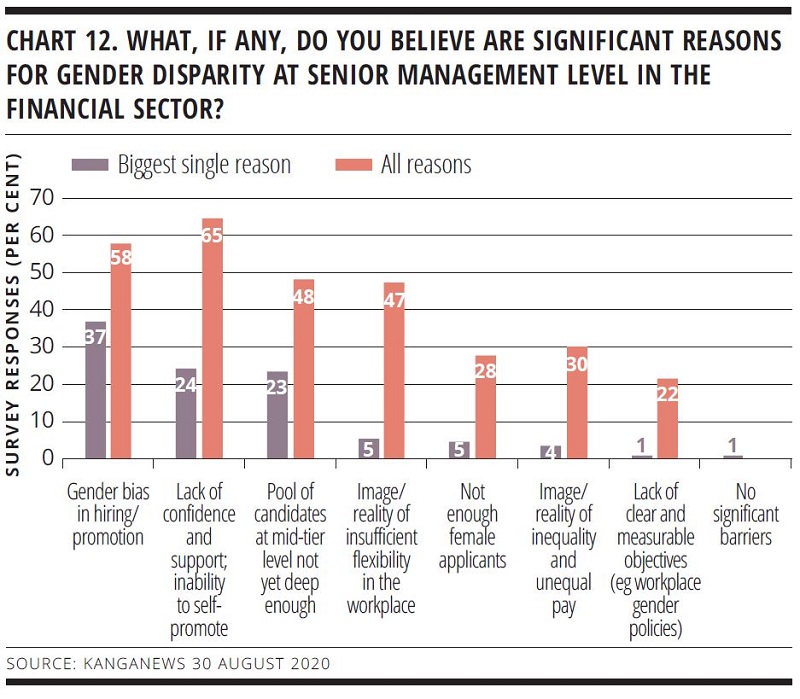
On this basis, it is not surprising that the survey suggests women believe financial-markets employers are doing enough to improve gender diversity at entry level but not enough at middle-management or – by an overwhelming margin – senior level (see chart 13). Nearly two-thirds of survey respondents are satisfied with the industry’s performance at attracting women to join at entry level, but this number shrinks to 17 per cent for senior roles.
This is unfortunate, because survey respondents also overwhelmingly believe the presence of women in high-profile, senior roles helps promote gender diversity across the industry (see chart 14).
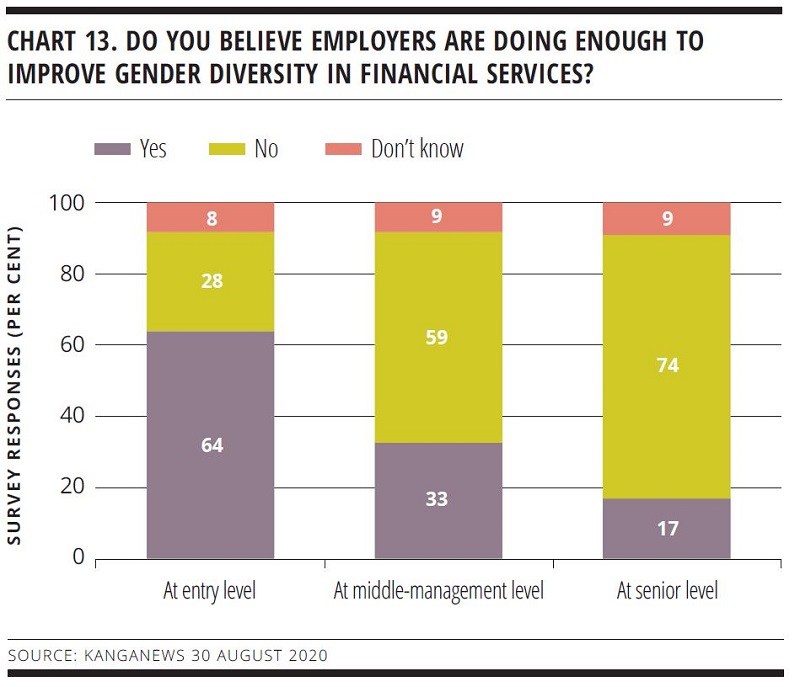
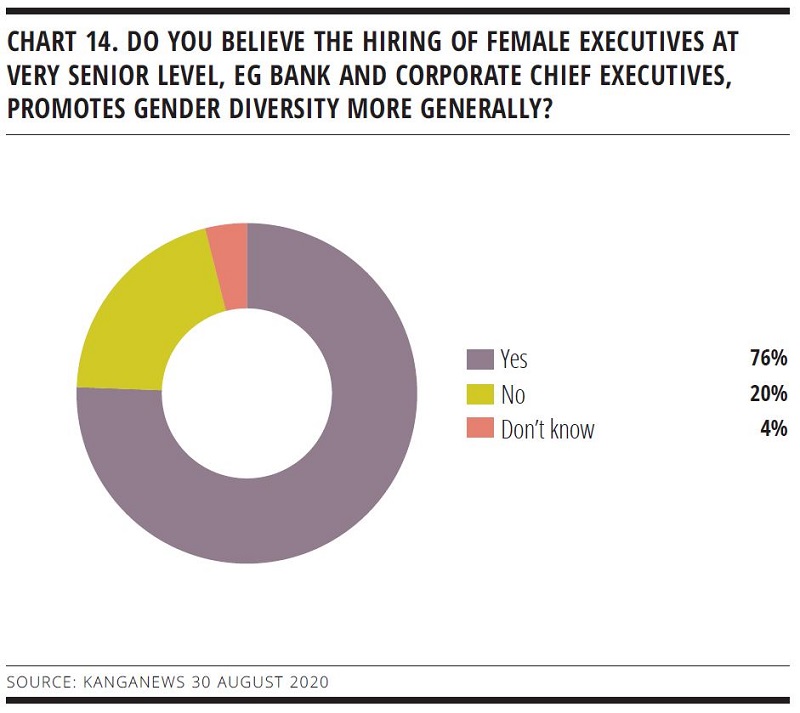
This is not the only area in which women believe visibility is key to promoting gender diversity. Survey respondents suggest women believe giving profile to female leaders in the media and at industry events is second only to strong employer policies on diversity and social inclusion as a promoter of gender diversity in the sector, for instance (see chart 15). There is much less support for hiring quotas at either entry or senior level.
Crucially, survey respondents are clear that workplace gender diversity promotes positive business outcomes. Support for the idea that “diversity of thought leads to better decisions and performance” is almost universal, and there is majority support for a range of positive factors derived from a diverse working environment (see chart 16).
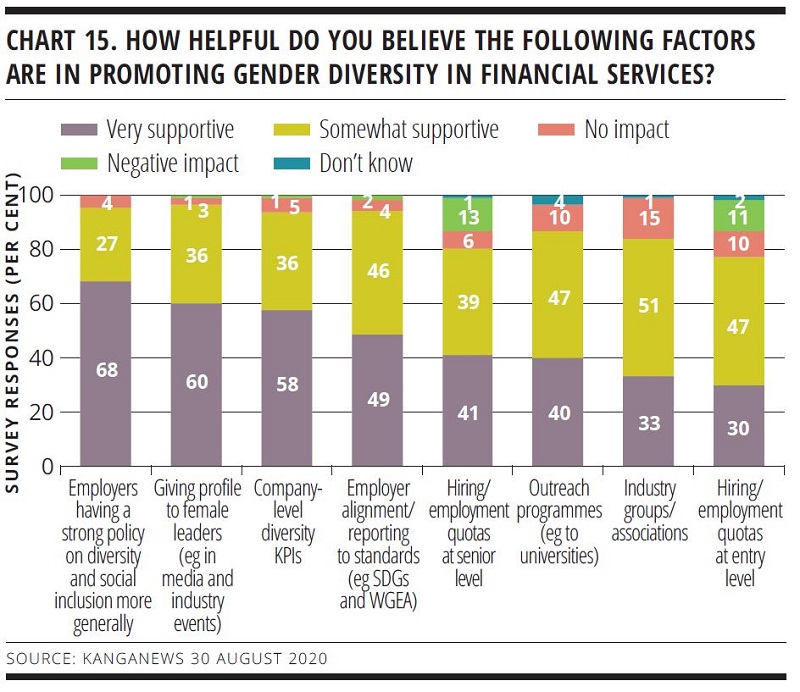
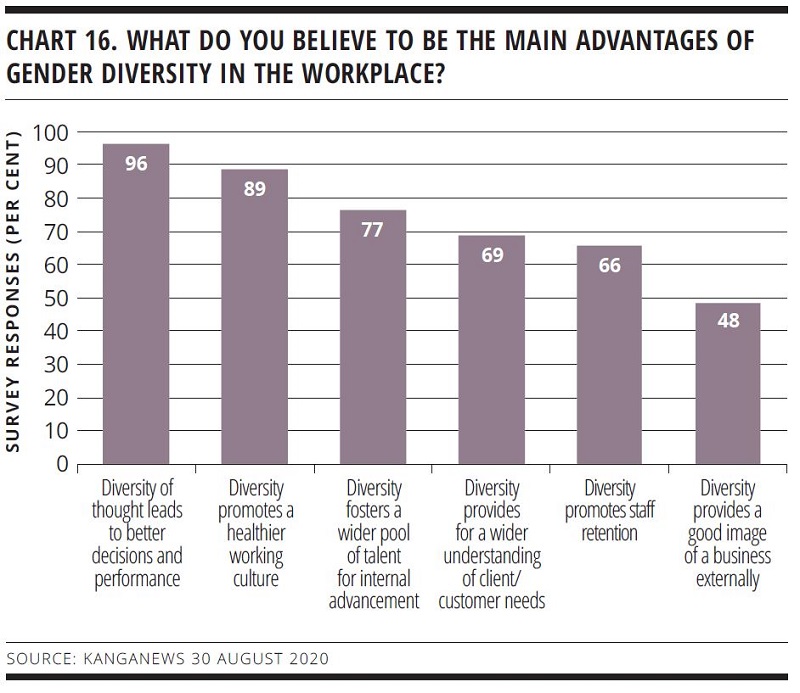

HIGH-GRADE ISSUERS YEARBOOK 2023
The ultimate guide to Australian and New Zealand government-sector borrowers.

nonbank Yearbook 2023
KangaNews's eighth annual guide to the business and funding trends in Australia's nonbank financial-institution sector.

WOMEN IN CAPITAL MARKETS Yearbook 2023
KangaNews's annual yearbook amplifying female voices in the Australian capital market.

SSA Yearbook 2023
The annual guide to the world's most significant supranational, sovereign and agency sector issuers.







